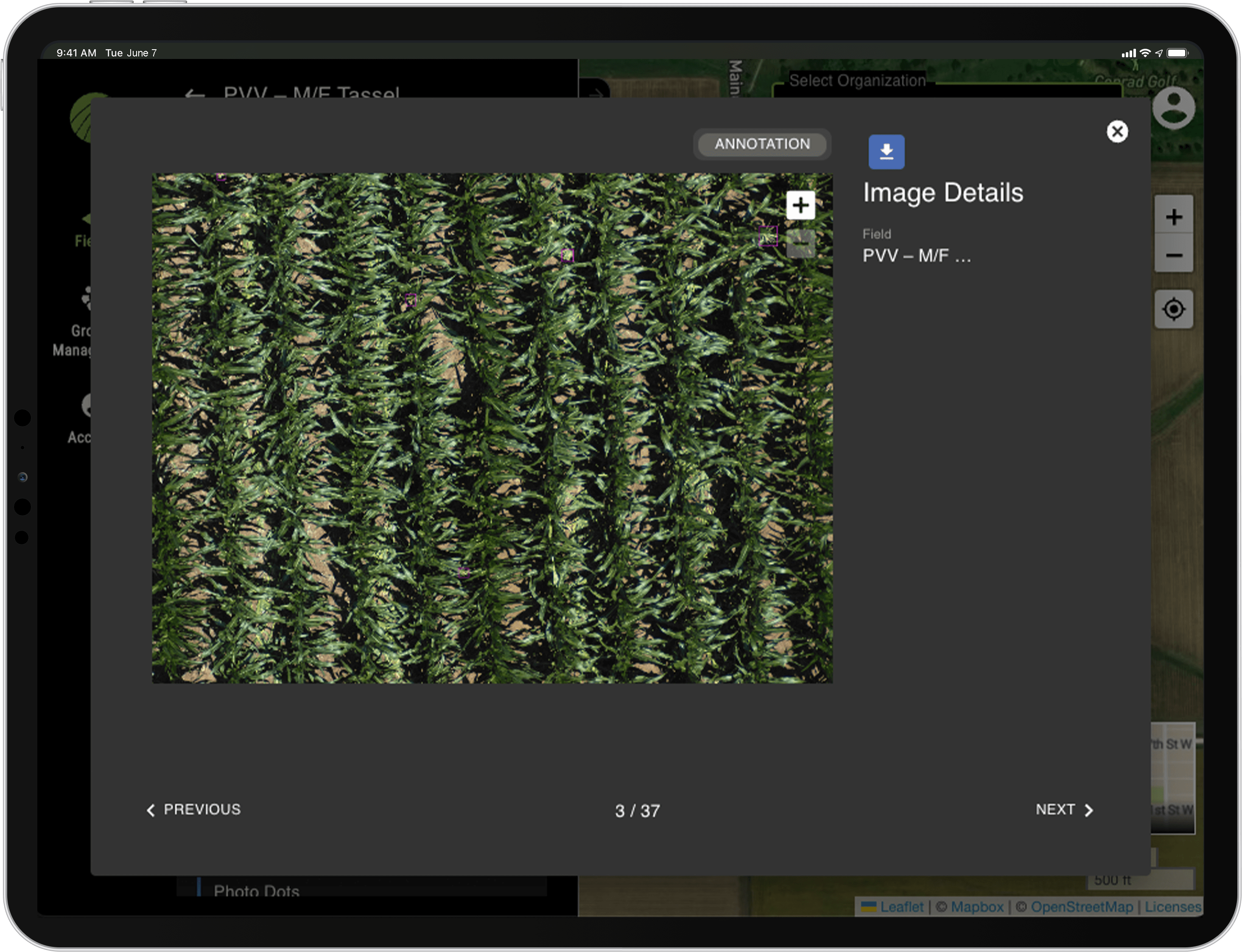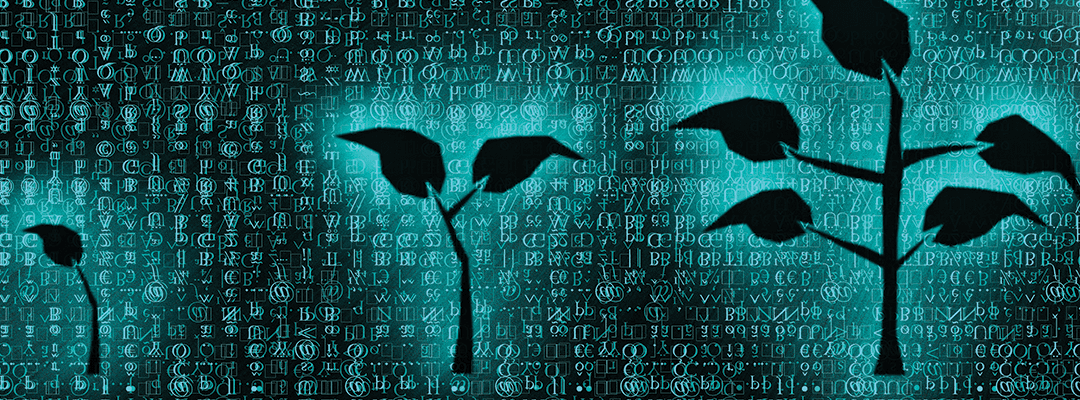Development and use of new technologies – like artificial intelligence and machine learning, drones, and robotics – are transforming how we grow and manage crops, use key resources, and implement sustainability initiatives.
Blockchain serves as a key technology that is core to the fourth agricultural revolution, mostly because of how it will change the way that we can record data.
Ok, but what is it? Blockchain records transactions securely and transparently because of its distributed ledger technology. This means that data can be recorded across multiple computers, becoming a “chain” of information that includes a list of transactions and information that cannot be altered or changed once stored within the blockchain.
This becomes quite powerful – especially as you look at several key factors critical to the future of agriculture:
- Traceability, or the ability to identify how food moves through the agricultural value chain. This can help to improve food safety while supporting key sustainability initiatives.
- Transparency, or being able to understand the inner workings of the agricultural supply chain to build trust and awareness (inside and out of the industry).
- Efficiency, by making it easier – and faster – to access data and make critical decisions.
- Security, by delivering a tamper-proof technology that can help to protect the intellectual property of companies.
With the ability to augment blockchain with accurate and precise data, it can become even more powerful. And as we think about where it can have the most impact – within global seed supply chains – pairing it with remote sensing may offer significant advancements to augment supply chain transparency and efficiency.
Understanding the Challenges in Seed Supply Chains
A critical part of the global food system, the seed supply chain is complex and interconnected – involving several key stakeholders, ranging from seed companies to growers to distributors and retailers. With global operations, seeds are produced and distributed across borders – resulting in international regulations, customs procedures, and logistical challenges.
Even beyond the global nature of seed production, it breeds complexity because of the challenges the industry faces given the nature of the business.
For instance, volatile demand often stems from weather-related issues, like the increase in demand for drought-resistant seeds after a dry year. Factors like pests and diseases can significantly impact production, and sometimes, can be unpredictable based on the variables of the season.
In addition to external factors, the industry is subject to its own complexity – with a large variety of seed types that all must be stored in ideal conditions in order to maximize outcomes. Lead times are also lengthy; both from the development of new seed varieties to respond to current conditions, and also from the time it takes to grow the product – the seeds themselves – given the seasonal nature of agriculture.
The Role of Blockchain in Agriculture: Data-driven Supply Chains
With various seed production locations around the world, managing disparate facilities, farms, and distribution networks creates complexity.
However, the bigger challenge for seed production leaders comes from capturing and managing data at these disparate locations; and being able to store, verify, share, and analyze this information to fuel critical business decisions.
Often times, this data isn’t stored in a shareable way. Sure, it may be easy to email or share in meetings among team members; but it doesn’t exist in a place where multiple locations and stakeholders can contribute to it.
And, even if it were stored on a network, there may be a lack of data standardization due to differences in how its collected (as well as different sources supplying the data). This can make it tough to even track information and make comparisons between locations to inform decisions.
Blockchain helps to solve these challenges because of how it is structured. Since it data is stored in a distributed manner – not on one single computer, but rather, a network of computers – it can’t be easily changed or tampered with because it requires that the change happen on every single computer in the network.
And, to further secure the data, within the blockchain are nodes. These are the backbone for the network. They are responsible for storing the blocks, or the units of data within the blockchain. The blocks themselves include different pieces of information, which in this case, could include seed characteristics, cultivation practices, and quality parameters – or even information on weather patterns, soil conditions, crop health, and pest management.
What’s critical for the operation of the blockchain is the validation of data, which can be done by the nodes on the network that are responsible for building the blockchain.
So, as we think about seed supply chains, this can be a critical way to manage data about individual locations and inform the broader supply chain strategy for global distribution. To dig into this, let’s use a real-world example with remote sensing.
Remote Sensing in the Agriculture Blockchain
Data standardization continues to be one of the biggest challenges for data in agriculture. This is for a few different reasons. For one, manual methods for scouting and data collection are pervasive; and the way that this data is recorded can differ across regions, locations, and even people within the same field.
It can also be challenging because the impact of weather and site specificity in agriculture means that factors will change based on the location. This requires normalization of the data before comparing information; after all, different locations may have varying input requirements, and this cannot easily inform decisions across locations.
Remote sensing, which includes the use of satellite imagery and ag drone systems, can provide deep insight into various factors within a field; from uncovering plant stress, identifying growth patterns, and informing input decisions. While high-resolution aerial imagery can be informative and provide necessary insight, the real value is being able to take the imagery and translate it into plant-level measurements and insights to truly understand what’s happening at the field level.
Now, let’s say that you’re able to garner insights from remote sensing – and standardize data collection via this technology across locations. This can be instrumental to identifying production or quality issues, and helping to augment decision-making for where contra-season production may be necessary to meet seed production forecasts for the coming season.
It doesn’t stop there. Getting more advanced insights via remote sensing can enhance traceability and even help execute smart contracts – or self-executing agreements in the blockchain.
Male/Female Tassel Count serves as one of these more advanced insights; this analytic is extremely helpful to validate detasseling operations and ensure digital purity.

Once detasseling operations are complete, the drone can fly over the field and capture imagery to identify where tassels may have been missed. This imagery is then translated by machine learning into key measurements to give an indication to where cross-pollination may be at risk.
In this case, the blockchain can use this insight and automate the operation to go remove the tassels that remain in the field. This automation can help save precious time, while increasing efficiency and giving visibility into detasseling operations across regions.
Plus, blockchain takes plant-level measurements to an even more precise level of detail. Each seed’s origin, production history, quality certifications, and distribution records can be securely stored on the blockchain. This enhances traceability and helps ensure that only genuine and high-quality seeds enter the market.
What’s Next with Blockchain in Seed Supply Chains?
While blockchain is still in its early stages of adoption in agriculture, there’s immense value in what this technology can do for the industry – particularly within seed supply chains. Today, the cost and complexity continue to be barriers for entry, but this will shift as the technology continues to advance.
Even if seed production companies aren’t ready to use blockchain tomorrow, preparing data practices today for future adoption serves as a valuable step.
This includes data standardization, like using remote sensing technology across locations and regions to capture and normalize data via the same methods; and data storage, creating a standardized methodology for storage and access to data (this could be in an agronomic insights platform or other business intelligence tool).
And, by doing so, it starts to create a historical record of data for analysis and insight. This can help to inform future decisions in a variety of ways; but also serves as core for feeding agronomic models to generate predictive analytics to understand key factors, like maturity date (to measure the timing of harvest readiness) and yield and quality (to forecast end-of-season yield outcomes).
Technologies like blockchain, particularly when combined with solutions such as remote sensing, hold immense potential in shaping a more productive and sustainable future. To embark on the journey towards this future, the most effective approach is to start building the pathway that harnesses the power of these technologies to lay the foundation for a data ecosystem of the future built on transparency, traceability, and efficiency.


